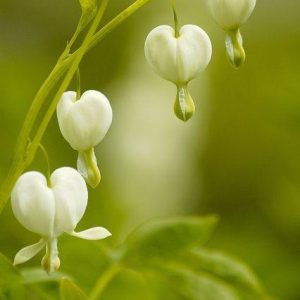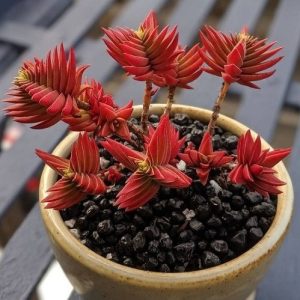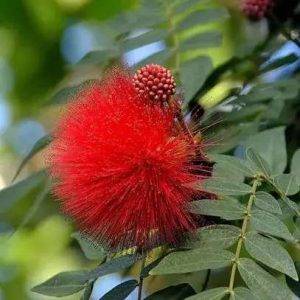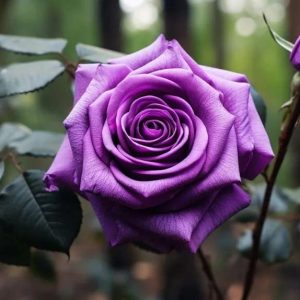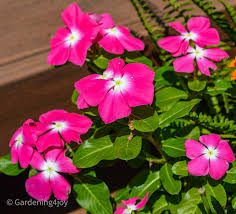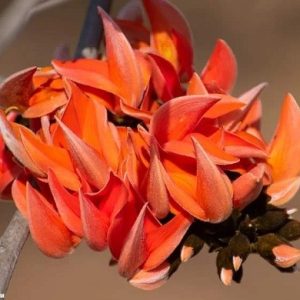Hydrangeas are ever-popular shrubs in home gardens everywhere. There are over 75 species of hydrangeas. They are native to Asia and come in many different forms, including a climbing variety!
Let’s face it – hydrangeas are usually grown for their beautiful flowers. Their large flowers are show stoppers. Many gardeners think of the massive snowball blooms when they think of hydrangeas, but did you know that there are other types of flowers on these flowering shrubs?
Lacecap hydrangeas are becoming a more popular option for gardeners looking for a different hydrangea to grow than the more common varieties. They are a more delicate option that is just as beautiful as the more common bigleaf hydrangeas. Let’s take a look at everything you need to know about growing lacecaps!

Pests Aphids, Japanese Beetles, Mites |
Species Hydrangea macrophylla, serrata
Well-draining, Acidic |
Plant With Low Growing Perennials, Annuals
Depth of Root Ball
Low |

Hydrangea macrophylla, or bigleaf hydrangea, is a species of hydrangea that we are all familiar with. This species includes the classic Nikko Blue hydrangea, one of the most popular blue flowering varieties. However, there are two types of flowers on these macrophylla hydrangeas: mophead flowers, which are the big round snowballs of flower clusters, and lacecap.
Lacecap flowers are really interesting. They are made up of sterile flowers which surround a cluster of florets. Sterile flowers are flowers that have no actual function within the plant. Their main purpose is to attract pollinators to the less showy flowers that need to be pollinated. Lacecap flowers are flat in appearance, which is a large difference from the mophead.
Hydrangea serrata, or mountain hydrangea, also have lacecap flowers. Hydrangea serrata is a subspecies of Hydrangea macrophylla but due to its popularity, it is known simply as H. serrata.
The difference between the bigleaf and the mountain hydrangeas is size. The leaves and flowers of the mountain hydrangeas are much smaller than those of the bigleaf hydrangea.

There are many different types of hydrangea flowers. The most common is the mophead hydrangea, but there are also panicle flowers and climbing hydrangeas. So what makes them so special?
The flowers of the lacecap hydrangeas add texture and interest to your gardens in a way that not many other shrubs can do. Mophead hydrangeas are snowball-shaped large flowers, whereas lacecap flowers are flat and broad. There are lacecap flowers available in different species of hydrangea, whereas the mophead flowers are only found on Hydrangea macrophylla.
They have many different uses in the garden because there is a large range of sizes available. Hydrangea macrophylla tends to be larger than Hydrangea serrata.
The larger of these species could be used as a stand-alone plant, or planted in a grouping to provide privacy. The smaller of these species could be used as a low-growing hedge around a patio or walkway. All lacecaps can be used in containers, just be sure you have a container large enough to maintain the plant properly!

If you are looking to propagate more plants to add back to your garden or to share with your friends you are in luck. They can be successfully propagated by softwood cuttings taken in the summer months, or by layering an existing stem of hydrangea in your garden.
However, they are most commonly purchased at nurseries, and plant stores as more mature trees and then transplanted into their permanent location. So, while you “can” propagate a lacecap, it’s typically easiest to buy them as a transplant.

Lacecaps can be found at most nurseries and garden centers in all sorts of sizes. You will want to plant them in an area with morning sun and afternoon shade. Keep in mind what the mature size of the hydrangea will be before you plant, making sure that you leave enough room for the plant to grow freely.
You may need to add compost to your soil to make sure that it is rich and well-draining. Plant your lacecaps in the spring or fall, and keep them well watered until they have established themselves.
When growing lacecaps, you’ll need the right combination of sunlight, water, soil, and the right climate to ensure they grow to their fullest capability. Let’s break down each of these important factors when it comes to growing lacecaps in your garden.

All hydrangeas will do well planted in partial sun. They do well specifically in morning sun and afternoon shade, which is especially true for lacecap hydrangeas. Too much shade will limit the flower production. Too much sun will cause the plant to stress, causing your entire plant to get out of whack. The flowers will shrivel, the leaves will droop, and the root system will be working overtime to get everything back in order.

Once you have your hydrangea established in the ideal location in the garden, your watering will be moderate. Lacecaps are not drought tolerant and will need to be watered regularly. How frequent that is, will depend on your environment. If your hydrangea is in need of water it will be easy to tell, the flowers will begin to wilt and the leaves will droop down toward the ground.
When watering your hydrangea by hand, aim for the base of the plant and the soil surrounding it. Hydrangeas are very susceptible to fungal diseases. Water that is left sitting on the leaves will make these diseases more likely to appear on your plant, so try to avoid overhead watering.

Lacecap hydrangeas prefer well-draining soil. One thing hydrangeas do NOT like is having wet feet. You can add organic material such as compost, peat, or even dried leaves to help with this. You can also add an inch or two of mulch around the plant to help retain some of the moisture from escaping the soil.

Bighead hydrangeas are hardy in zones 6-9. Mountain hydrangeas are a bit hardier and will perform well in zones 5-7. In the colder zones, it is recommended that you protect your hydrangeas from the winter cold.
To do this you can gather some garden stakes and burlap to create a safe environment for your hydrangea. Use a material, such as dried oak leaves or straw. These materials will not compact over time to insulate the plant.
There are also plant-protecting bags available that you simply place over the top of your plant which will do the same job as the burlap. Whichever method you choose, be sure that the fabric is not making contact with the plant, this could damage the buds that are forming.

The best way to fertilize your lacecap hydrangea is to use manure or compost around the base of the plant. Not only does this produce excellent results, but it will improve the conditions of your soil over time.
Another option for fertilizer is a simple 10-10-10 fertilizer. This type of hydrangea fertilizer should be applied twice a year. Once in the spring and again in the fall. Be sure to follow the label instructions on whichever product you purchase.
Do not use chemical fertilizers on hydrangeas after August as the plants are already preparing to go dormant.

Hydrangea macrophylla, or bigleaf hydrangea, and to a certain extent H. serrata, will react to the pH of your soil. They will also react to the level of aluminum in your soil.
Aluminum sulfate is readily available, and the best product to use to enhance the blues of your flowers. This method should only be used twice a year; once in April and once in May.
If you are wishing to enhance your pinks or reds, using garden lime will be your best tool.
Maintenance

During the summer months, hydrangeas need very little maintenance aside from watering. Once a frost hits, the leaves will begin to turn yellow and fall to the ground. Remove these leaves by hand, or by using a small rake.
Be sure to grab the leaves out of the base of the plant. This will help clear any leaf litter that could be diseased. It will give your plant lots of air circulation which will help keep those pesky fungi away.

Both Hydrangea macrophylla and Hydrangea serrata flower on old wood and new wood. Old wood is growth from the previous season, whereas new wood is growth from the current growing season.
These old wood species don’t typically require a lot of pruning and are at their best when they are left to grow freely, and pruned only for containment and to remove winter kill.
Pruning is best done shortly after flowering completes. This pruning includes the removal of dead flowers, dead branches, or branches that have taken on an unsightly growth habit or those that have grown into an area where they are unwelcome.
The reason for pruning in the fall is because these lacecap hydrangeas form their buds on both the new wood and the old wood. The flower buds that form on old wood will be forming shortly after flowering has ended, and the new wood will need time to harden off before it is able to form its flower buds in the spring. T
Choosing the right type of hydrangea oftentimes comes down to looks. The delicate lacecap flowers of this type of hydrangea make it very unique. With that being said, there are a few more common varieties that are often chosen for their beautiful colors and ease of care. Let’s take a look.

This is a beautiful lacecap variety. Hydrangea macrophylla ‘Blue Wave’ is covered in long-lasting, showy blue flowers. This lacecap hydrangea will grow to about six feet in height, and five feet in width. This larger variety makes a great foundation plant or a stand-alone plant in a shady area.

The flowers on ‘dancing snow’ are a little different than your standard lacecap hydrangeas. The flowers are compact, and they are double flowers. This means that each flower has extra petals making them more extravagant.
The shrub itself is compact and will only grow to about three feet tall and five feet wide. What this shrub may lack in size, it makes up for with gorgeous flowers. This shrub would be beautiful as a hedge, used in a woodland garden, or in a cutting garden.

In a sea of blue and purple blooms Hydrangea macrophylla ‘Lady in Red’ is a show stopper in your garden. This variety begins its season in the early summer with a light pink flower and slowly matures to a deeper pink and occasionally a blue. Before the blooms appear this plant has red stems and red veins in its green leaves.

This hydrangea is a very early bloomer, flowering in early summer. Hydrangea serrata ‘Diadem’ is a sweet compact plant with delicate flowers. These flowers are sensitive to the soil pH and will either show themselves as a pale pink or a pale blue. This smaller variety will grow to three feet in height and width.

Many of the pests that are found on hydrangea are common garden pests. The number one thing pests will go for on a hydrangea are the juicy green leaves. If you have planted a wildlife salad bar nearby you may even find some rabbits or deer dining on the flowers.
It can be disappointing to see your beautiful leaves getting eaten, but do not worry. These pests are easily controlled. The most common pests you will find on your hydrangeas are aphids, Japanese beetles, and spider mites.
Aphids and spider mites can be removed by hand, or by spraying your plant down with a hose. Japanese beetles can be knocked into a bucket of soapy water by hand.
Insecticidal soap can help with the control of these pests. Using insecticidal soap will also keep pollinators safe while controlling the bad guys.

Hydrangea shrubs and vines can struggle with fungal diseases. The good news here is most of these are harmless and will just take away from the beauty of a plant. Diseases you could encounter are leaf spot, powdery mildew, botrytis blight, and root rot.
The best way to prevent all of these diseases is to use good garden habits. Remove diseased leaves from the plant, and keep the soil around the plant free from fallen leaves and weeds.
If prevention doesn’t work you can purchase a horticultural oil such as All Seasons by Bonide. This oil can help to control these diseases as well as some insects.

The shrub-like nature of lacecaps makes them an excellent foundation plant, a nice addition your woodland gardens, or in containers to make a splash. Hydrangea serrata is a bit smaller but would make a really nice hedge along a patio border or walkway.
The lacecap flowers will dry very nicely and will make excellent additions to your flower arrangements. When they are allowed to dry out naturally they could last for years.
Well, that depends. They can tolerate a severe pruning, but you will only want to do this if you really need to. Older hydrangeas that have slowed flowering, or started to look a bit ragged will benefit greatly from a rejuvenating hair cut.
A good rule of thumb is to only prune one third. This means one third in height, but also only one third of the branches. You can do this over a few years time, and will be very happy with the results.
There could be several reasons why your lacecap isn’t blooming. The first thing to consider here is when you last pruned your hydrangea. Lacecap hydrangeas should be pruned right after blooming in the fall to avoid snipping off any of the flower buds that have already formed.
If you have pruned at the right time, double-check your fertilizer. Lacecaps need phosphorus to flower. A fertilizer that is too high in nitrogen will help your plant produce really lush foliage, but it could hinder the production of flowers. Make sure you are using a fertilizer that is labeled for flowering plants and shrubs and you will be safe!
Your plant’s location could also be affecting its ability to bloom. Lacecaps need partial sun: morning sun and afternoon are best. They also need to be planted in well-draining soil.
The short answer to this is: no. No plant is truly deer resistant. However, hydrangeas are not a favorite food of deer and are rarely damaged beyond repair. Sadly, the favorite part of the plant for the deer to nibble on is the flower buds.
They could easily clear your plant of flowers for the entire year. There are deer repellant sprays available at garden centers that will not harm the deer, they typically have a bad odor or a nasty taste that deters the deer from eating your plants.
Absolutely! The best time to transplant them would be the same time it is best to plant them from a nursery pot. You will want to do this before the ground has frozen in the fall, or after it has thawed in the spring.
There are varieties of lacecap hydrangeas that are reblooming! Endless Summer has varieties that will bloom on both new wood and old wood. Not all lacecaps are reblooming, however.
If you are unsure, just watch your hydrangea bloom for one season. If you notice that you are getting a set of flowers a little later than the first you likely have a lacecap that is a reblooming variety!
If you are a lover of hydrangeas but have not added a lacecap to your garden, I highly suggest you do so! They are wonderful plants. Don’t be turned away by their less showy flowers. These shrubs will be covered in large lacecap flowers and will make wonderful additions to your garden.
